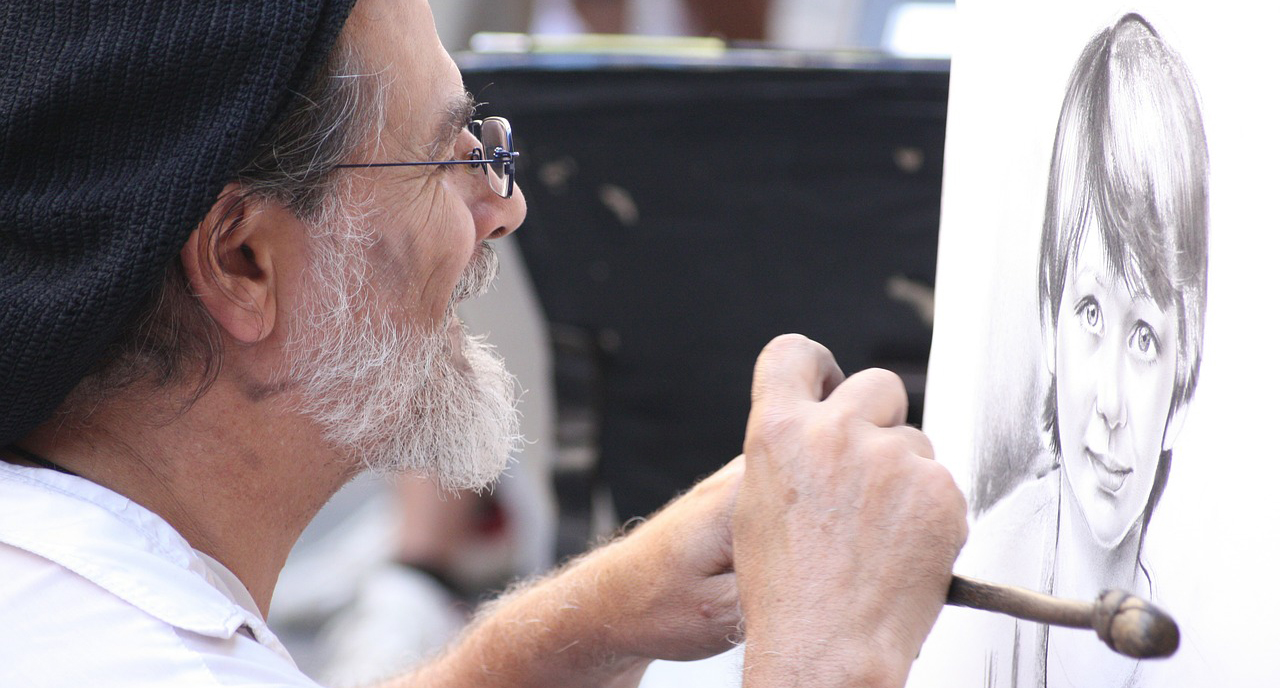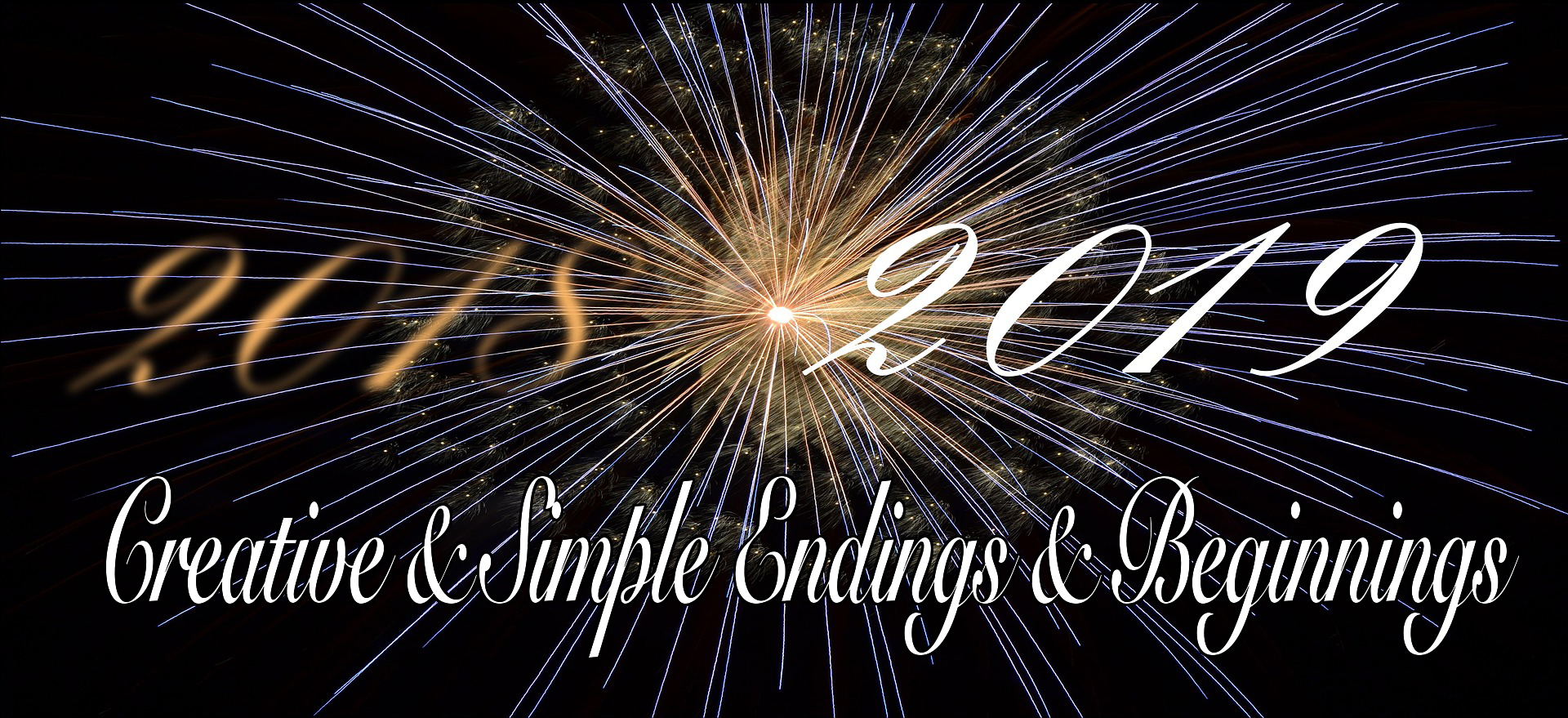To take commission work or not take commission work … that is the question I have been facing into with several of my clients over the past couple of months. It is a personal decision. I have heard Artists debate this over and over along with the whole conversation about creating art just for themselves or just for art’s sake vs. for others.
Bottom line is that it IS a way to earn money from your Art and it can be very lucrative IF you follow some basic rules to make sure you and the client who pays for your work both win.
Certainly some of the most well known Artists throughout history have lived off of commissions. Art in History has a very rich existence that it may not have had without the patrons (organizations, governments, churches, individuals, etc.) who were commissioning work from Artists. Commission work was how entire eras of Art came to be. It is fairly recent that Artists work only for themselves or for the sake of Art alone.
I have, however, personally heard horror stories about commission work gone amuck and so let’s look at some of the things I have paid attention to, done and helped other Artists do that kept that from happening.
Needless to say, before we start, if a gallery (or galleries) represent you then it is best to work commission details out with the gallery long before accepting a commission. It is possible that taking commissions will break agreements between you and the gallery. On the other hand, many times the gallery who represents you can be a big contributor to you receiving and negotiating commission work.
Creating successful commission pieces are a total collaborative process between you and the client who is commissioning you for the work. In order to work for commission there are a few things that you need to check with yourself on first and things that you make sure you can bring to the table such as:
-
People who are willing to pay you to do a commission piece for them want to know that you know what you are doing. They also want to know that choosing you was a smart idea as time goes on so keeping the right attitude through the process goes a long to have them experience that.
When a collector knows that they can trust you, has experienced your confidence and feels as though you are “in charge” then they will actually leave you alone to deliver vs. trying to micro-manage you.“
Can I trust myself to deliver what I say I am going to deliver?”, is a great question to ask yourself when considering taking on commission work.
-
Know you and get real with yourself. Know what kind of work you are willing to do, not willing to do, are good at and not good at. If you aren’t good at portrait work don’t take on a commission for it. If you are unwilling to do landscapes then say so. If you hate the color pink then don’t agree to it.
Now I know this may seem obvious but I can’t tell you how many times I have heard an artist say “Well, it was just for this one piece, and I figured I could figure out how to do it (or tolerate it, etc.) and the money was good, etc.” which was he beginning of their own personal disaster.
Ask yourself questions you need to ask such as,”Can I feel inspired and excited while still fulfilling the client’s request?” or “Can I do this work without feeling like I am selling out?” or “Can I retain my creative freedom and integrity while delivering what the client wants?”
-
Ideally every potential client who’s looking to commission you would know, understand and love your work fully and never ask you to do work that you are not thrilled to do but that just isn’t going to always be the case. No amount of money is worth you stressing yourself out, experiencing yourself as selling out or making a piece that you are not proud to call yours.
-
Communication. You need to be willing to listen and stay in communication with your client. This is your responsibility if you plan to get paid. You are the one performing a service and good customer service is part of that game. Good communication is vital and you need to encourage communication at all times.
You can do this via email, phone … whatever method you feel more comfortable with. I prefer email since it allows for written documentation of the process. The Artist-Patron relationship is an interesting one but does not need to be a hard, complicated or uncomfortable one. Remember, at all times, that you are fulfilling on a commission for a client – not a piece just for you.
-
Discovery. You are keenly conscious, interested and aware of the client’s likes and dislikes and spend time discovering this and checking in on this throughout the process.
-
Ability to work with others. If you are not good at working with other people then I do not suggest doing commission work. It is definitely a team sport.
-
A portfolio of work. Without this everyone is shooting in the dark. With this the potential collector can more easily tell if you are the right Artist for him or her, why you are and what they are wanting you to do … with your own work as an example.
-
Be professional. Taking commission work is a business endeavor done for money. Keep it on that level and it will go much smoother.
Now this is just a start. In order to set up a commission work that is a win-win for you and the collector who is paying you, here are several stages and elements you might want to apply:
First Meeting:
This is where you begin the discussion. You can either have the person go through your portfolio ahead of time (particularly if you have an on-line portfolio) or you can do it together, if they are visiting your studio, in this first meeting. I would recommend that you have them do some work ahead of your meeting and give you whatever feedback they may have ahead of time so that you save time on this meeting.
This is a meeting where you begin to agree on things that set the tone for all of the rest of the work so please bring your confidence, experience and professionalism to this meeting. You really want to get the client talking and you really want to listen carefully not just to what is being said but what emotions and commitments are in the background that might not be being said.
At the end of this meeting you will want to know what is wanted and needed of you so you will need to ask questions such as:
- What subject matter is it they want in the work?
- What is their initial vision for the finished work??
- What colors do they want to live with?
- What colors can they NOT live with?
- Is there a mood/emotion they want to capture?
- Are there any design concepts they already have?
- How open are they to your interpretation of the subject?
- How involved do they want to be?
We are assuming they want you to do this commission work for them because there is something about your work, that they have seen, that told them that you are the right artist for the job. However, if during a review of your work together or at any point in this first meeting, you can see that you are not the right Artist for the job THEN SAY SO.
Not everything that comes your way will be right for you. Be straight with yourself and your client. If you cannot do or are unwilling to do what the client wants, tell them. If possible you can even refer them to someone who can. That builds a relationship that may benefit you in the future and is a win-win for everyone.
On the flip side … don’t simply turn something down because it is challenging or something beyond your normal scope of work. Consider it carefully. If you can get excited about the project and the prospect of pushing yourself, it can be very rewarding.
Make sure, in this meeting, that you discuss your terms of agreement with them about how you will approach the commission, payment, delivery, etc. Let them know up front what you expect and make sure you understand what they expect. Every commission piece involves unique factors. However, there are common factors that should be considered. These common factors can serve as a foundation for how you choose to handle the commission process.
Discuss things such as:
- Your artistic working process. Be clear that you will try to stay true to what they want, but make it clear that your ‘voice’ or style or interpretation will inherently be part of the work.
- The subject matter of the work.
- The style of the work.
- The materials used and the size of the finished work.
- What the final piece will depict?
- Project process:
- Milestone dates (when you would like to see sketches, etc.)
- How many draft revisions will be granted and when?
- How much input they will have at each step along the way?
- Explain that, when deciding on what they want, that the sketch stage is the time for exploring options and making major changes. The painting in progress will provide chances for some revisions, but by the time the painting is almost finished there should be only a few tiny changes left to iron out and that no major changes will be allowed to happen after a certain point.
- Setting up your milestones about revisions and when the work becomes “unchangeable”. There is a point when a work is too near complete to make any more changes.
- Final deadline and how the final image or work should be delivered
- Prices:
- The price of the piece?
- Cost, broken down (any fees, shipping charges, installation charges, taxes, etc. should be noted here)
- If the final size of the piece is not determined up front and cost is associated with that, then an approximate amount is established, based upon likely sizes with an agreement to adjust this appropriately once the final size is determined.
- What is included? Are original sketches included, etc.?
- Travel Expenses – If your work requires that you travel to the client or the client’s requested location then make sure that the client covers the travel expenses.
- Payments:
- When will payments be required and how much is required (e.g. 50% advance or deposit upfront, 50% after final delivery, 1/3 advance or deposit upfront, 1/3 at final sketch approval and 1/3 before final delivery, 100% after final delivery, etc.).
- How they will pay (e.g. via PayPal, a check, mailed cash, a gift card, tangible goods, a trade, etc.)
- How and when final payment should be rendered?
- Also the final work should never be delivered until the final payment is made.
- I highly recommend an up front advance or deposit. It should be made clear that the advance/deposit is non-refundable. If the clients back out, they need to understand and agree to the fact that the advance pays for your invested time, labor, and art materials.
- Delivery and/or Installment:
- Will the final work be framed, installed or how it will be presented?
- What will be delivered as part of the contract & what will be additional (Painting, Digital image, sketches, etc.)
- Will the client plan handle transportation of the finished piece or will he or she expect you to handle delivery?
- Will the client expect you to hang the commissioned painting, sculpture, etc.
- Model Releases: (in case you do portrait work, etc.) Make sure you obtain written releases of anyone who appears in the commissioned work you produce. This can save you a difficult legal situation down the road.
- Copyrighting & Permissions:
- Distinguish that you value their opinion, however, the finished work is still yours even though it physically belongs to them.
- Are you giving them full copyright or just a license to use it for personal purposes only (only to hang on their wall, etc.)?
- Are they allowed to share it publicly?
- Are they obligated to attribute you whenever they display the piece?
- Will you be able to make prints from a digital copy of it, or use it in your portfolio, future promotions or license the image out?
- Is the client purchasing any commercial rights to the image? (Such as using it on a book cover, or to promote something, or as part of an ad?)
- Can the client sell copies of the image?
-
Right of Refusal: You want to work a plan for right or refusal in advance as it may happen that the client DOES NOT like the final piece. If you have done your job through the process by showing your progress and getting approvals each step along the way, as I will outline here, then you will have a smaller chance of this happening. It can still happen, however, so you need to decide what you will do if it does. If you are prepared then it will go much smoother, more professionally and more business-like. The whole process will be much easier if everything is understood before you begin.
In the case that the client does not like the final product, the way that some artists handle this is that the Artist retains the refused artwork and the non-refundable advance or deposit. This is free of any claims or interests of the client and the client will not owe any additional fees to the Artist. Obviously this leaves you capable of selling the work elsewhere. Some Artists do not have any right of refusal after the final sketch sign offs.
As for copyrighting and permissions with the work: Basically, from the minute something is fixed in any medium (be it a canvas, on a piece of paper, in a photograph, or in a digital file), it is immediately copyrighted to the person who created it (the Artist). Even if the client has given you the idea for the painting, requested it look a certain way, etc. the execution of the final product is copyrighted to you.
Since the copyright is yours it gives you the right to decide who can use your work and how, whether or not it can be duplicated or reproduced, and where and how it can be displayed. Discuss all of this up front with your client so that there are no misunderstandings later. You should then follow up your discussions with all of this itemized in your contract.
The Contract/Commission Agreement: Unless you know the client well or have worked together before, it is wise and just basic business to write and sign an official contract. The handshake and oral agreement method is a sure fire way to get burnt, as many artists have. A contract makes it a professional transaction, let’s the client know you take your work and the commission seriously and serves the purpose of putting everyone on the same page about details like: the date of delivery, different parties’ rights to the final work, money have exchanged hands and when, etc.
Note on Prices: You can see my blog on general pricing HERE but to address pricing of a commission piece in particular I would recommend that a commission piece be set up with a higher cost than a regular piece. A commission piece has more administration, time and communication involved than any non-commission piece.
If you accept a commission you will most likely end up communicating frequently with the client. There will be phone calls to make, emails to send and progress photos to take depending on the arrangement. I recommend that your overall price should include those expenses. After all, time really is YOUR money. I would recommend at least a 15% surcharge above your normal retail prices.
Only after discussing all of the above should you make a final decision about taking on any specific commission work.
IF you decide to take on the work then there are next steps to handle:
- Take photos, or do sketch studies, of anything you talk about in the 1st meeting for references of colors, mood, light, values, texture, etc. I strongly suggest not working from someone else’s photos or sketches (including the clients) if you can get there in person. A big part of your finished product is based on your view so using 2nd hand information carries a risk for your creative process. Of course, if you cannot get there then you need to be able to clearly request what you need from the client.
- Address any questions or comments about the commission.
- Assure the client that he or she will be satisfied with the finished product in words and in actions.
- Set up a clear timeline with the client. Make sure you can deliver what you promise when you promise. Better yet, pad your promised delivery dates a little and deliver early.
Immediately after the 1st Meeting:
Set up the contract with the client. Get the client’s signature and the first payment / deposit / advance with in 48 hours max of your 1st meeting. This keeps it fresh, and begins the ball rolling with no backing out past this point
Meeting #2:
This meeting can be done in person or virtually. This is the next opportunity to get feedback and move the commission forward through the approval process. In this meeting you want to show the client’s beginning concepts or studies with thumbnail drawings, photos, rough sketches or preliminary paintings. My recommendation is that you not give them too many choices if you are showing them different concepts – presenting 3 to choose from, at max, is very effective. If you cannot meet with the client in person you can email the client the study images.
This sketch stage is the final time for exploring concept options and making major changes. Make sure the client understands that what may seem like a “small” change to them may result in you needing to start over so beyond this meeting point there is nothing BIG to iron out together. This will have them seriously think through the work you are doing together in this meeting.
BIG NOTE: If, at this point, the client is happy with the way things are going and how things look, do not change the look of the art without consulting the Client again.
Meeting #3:
- This meeting is scheduled about midway through the project.
- At this time you can still easily do small edits or make small adjustments.
- The client can now have a clear picture of your vision and you can address any concerns.
- If they are dissatisfied or have criticisms, try not to loose your confidence or professionalism. Stay business-like so that you do not run the risk of the client becoming increasingly dissatisfied with the work.
- If dissatisfied, then remind the client that the concept was approved and work through what has changed for the client or what small changes you can make to fulfill on the their vision at this point.
- If you have chosen to receive payment in thirds this would be the next point where a payment is due and you can continue to work.
BIG NOTE AGAIN: Make sure you deliver what you promise when you promise.
Final Viewing and Hand-off
When you have completed the work, email an image (or show it in person if local) for final viewing. The final payment is then due prior to shipping/delivery and/or installation of the work.
There are, of course, tons of extra details that are involved with developing yourself as begin successful in doing commission work but this is where I will stop for now. I hope this has made a difference for you.
I also know that many of you who are reading this may have already been very successful at doing commission work and have some great suggestions for the rest of us that you can share … please feel free to do so … I love hearing from you and will be very grateful for your have to contribution!!!







Kym !thank you for all those advices , thank you for all these efforts to restructure the arts and for help artists to overcome their problems ,
This is mainly your responsibility to convince people in the art of the profitability of a new organization of the sector. , the artist can not have all this time to organize and think about all these details , we must create official coaching boxes around the world which all the artists adhere for completing one best finality of their work, I think that should be a great perspective for the world of art.
Elloumi – Thank you for your fabulous participation. I love the idea of “coaching boxes” – I think we Artists can greatly benefit from coaching – and I don’t just say that because I am a coach – I have several coaches in my life myself that I utilize to help me past what I can’t see since I am in the middle of it. A professional athlete would never dream of not having a coach & most business people today would not either – I think it really is the job of creativity & artist coaches to serve Artists and to help them move all the details out of the way so they can simply do what they do best – CREATE!